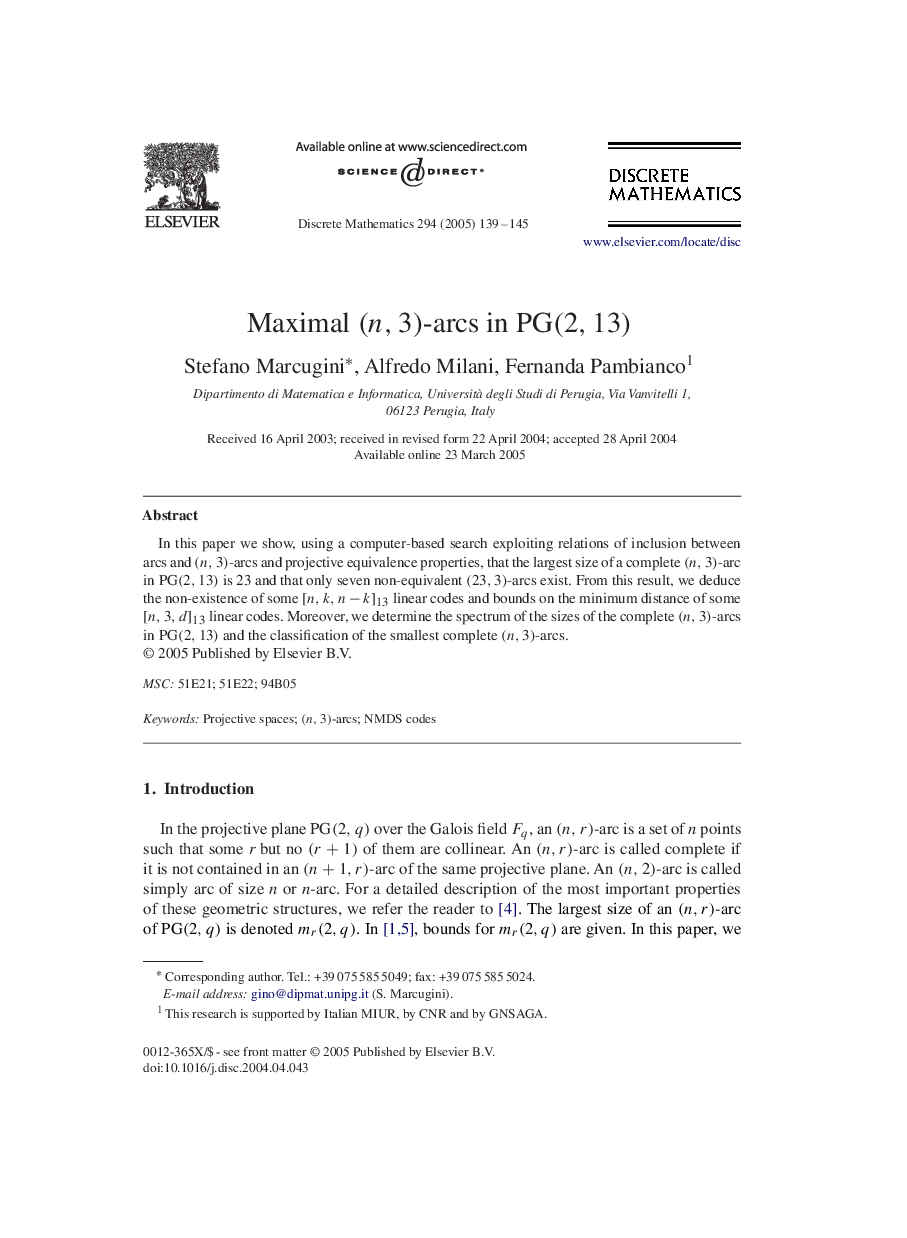| Article ID | Journal | Published Year | Pages | File Type |
|---|---|---|---|---|
| 9512444 | Discrete Mathematics | 2005 | 7 Pages |
Abstract
In this paper we show, using a computer-based search exploiting relations of inclusion between arcs and (n,3)-arcs and projective equivalence properties, that the largest size of a complete (n,3)-arc in PG(2,13) is 23 and that only seven non-equivalent (23,3)-arcs exist. From this result, we deduce the non-existence of some [n,k,n-k]13 linear codes and bounds on the minimum distance of some [n,3,d]13 linear codes. Moreover, we determine the spectrum of the sizes of the complete (n,3)-arcs in PG(2,13) and the classification of the smallest complete (n,3)-arcs.
Keywords
Related Topics
Physical Sciences and Engineering
Mathematics
Discrete Mathematics and Combinatorics
Authors
Stefano Marcugini, Alfredo Milani, Fernanda Pambianco,
